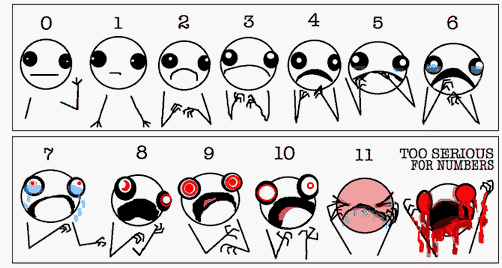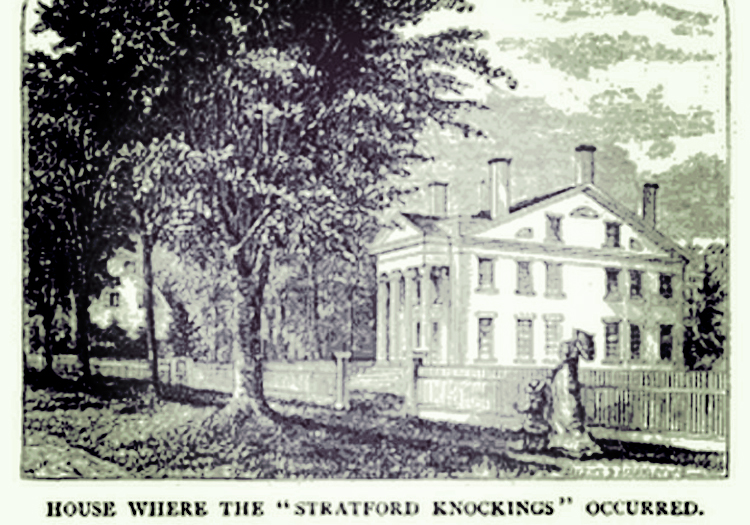
From Hyperbole and a Half.
(Originally published on March 1, 2021, at the sunsetted GlitterCollective blog.)
I didn’t think very hard about how I used videogames as analgesia for all sorts of pain until I was literally using them for analgesia for a diagnosed acute physical pain issue. Recently, I started thinking about how I’ve used videogames to help handle emotional pain as well, because I have been longing for a videogame I could fall into for the entirety of the pandemic.
Content warnings for: brief discussion of broken bone (with medical illustration), nongraphic mentions of animal deaths (very general), and discussions of grief, workplace bullying, abuse, gaslighting, and mental illness.
The Busted Arm Chronicles
Physical pain first.
One day, about 10 years ago, I left work feeling pretty good. It was a chilly rainy day in early November, but even that didn’t deflate my mood. At the time, I felt I was doing well in a relatively new job and I was heading home for the day. However, as I walked down the stairs into the subway, my boot hit a patch of what was either leaked rainwater or spilled soda, or possibly both, and my feet went out from under me. I managed to catch myself on my elbow, but something popped and was very wrong.
Long story short, I had broken my upper arm in a way that is most frequently seen in equestrians who catch themselves on their elbows when they fall off their horses. Something something lateral shear on a point at which five muscles meet the bone.

Despite starting physical therapy early and making sure that I didn’t keep the arm in a sling or otherwise immobilized, by Christmas, my shoulder was “freezing” (ie, locking up due to inflammation, with much reduced range of motion). If you’ve never experienced a frozen shoulder, it can be excruciating, with inflammation and swelling enclosing nerves and giving white-hot electric jolts of pain through the entire arm and hand at any movement.

I drove to visit family for the holidays with my wife and brought my reusable ice packs. This was… barely enough. I had already spent 2 months sleeping exclusively on my left side. Now I was having trouble doing that, because I had to balance precariously or risk jostling my arm in the wrong way — somehow it was even more painful to move my arm than it had been in the days immediately after the break. Fortunately, in the second house we stayed in, they had game consoles, and the person who owned the game consoles was, contrary to most of their behavior, amenable to my using them.
I was introduced to Halo Wars there, and a few other strategy games I don’t remember as well. I found myself roaming their house in the middle of the night, unable to sleep for the pain. An ice pack, a handful of ibuprofen, and an hour of Halo Wars, however, usually allowed me to go back to bed for a couple hours. When we left to go home, I was loaned the game, and I played it some at home as the pain accelerated.
The game that really saved me at home, though, was Plants Vs. Zombies.

Through January and February of that year, I developed a ritual: I would take a handful of ibuprofen and go to sleep at the same time as my wife. After about 4 hours of sleep, the ibuprofen would wear off. I would take more ibuprofen, but it would take 30-60 minutes to kick in, so instead of tossing and turning, I would sneak out of the room and go downstairs, where I’d lay on the couch in the dark, ice my shoulder, and play PvZ on the TV until I fell asleep again. My wife would wake me in the morning.
I developed a fondness for the bowling minigames and for watering my plant collection. I maxxed out our gold. I played through the whole game again from scratch.
This was my ritual until I realized how much ibuprofen I was taking and got both some short-term non-NSAID pain meds and a steroid shot in my shoulder. The first time I slept through the night after getting both of those, I cried in the morning at how much better I felt. But I honestly wouldn’t have made it through without PvZ.
Grief Counseling By Dungeoncrawl

My wife and I have been extremely lucky in our cats. When we first got together, we sustained the extended loss of her cat, which was terrible. But then we acquired, over a bit of time, a trio of cats around the same age, and they were quite healthy and happy through our time in our first New England apartment and then moving into our house. Around age 9 or so, though, the youngest cat of the 3 developed diabetes so brittle we never actually got her stable, just kept her comfortable. And after 2 or 3 years of giving twice-daily insulin to a semi-feral cat, she suddenly decompensated in a way that made our decision clear and very fast.
We were left in freefall by the surprising emptiness of our house. Our other two much more human-focused cats were still there, loving on us and grieving in their own ways. Our other, much younger cat who had insisted we take her in from the outdoor life foisted upon her by being dumped by her previous owners was also very comforting. But what would help provide analgesia (or, as we referred to it, “brain-smoothing”) for this particular pain?
Turned out we had Baldur’s Gate: Dark Alliance for the Playstation 2 on the shelf. Most of our previous gaming together had been sharing a controller for JRPGs, so I went out and got a second controller. And then we curled up on the couch together under heated blankets (we had just experienced Snowtober 2011, and our power had been out for >40 hours), our cats gathered on or around us, and played through it. Not for the look of the game, which, compared to JRPGs, was fugly. Not for the plot, which was absolutely pastede on yay. But just for the working together and pixel-smashing and ridiculous chatter and talking back to the wooden NPCs. We didn’t want something we cared about. We just wanted distraction. We got it in the form of the ranger and the dwarf who periodically hopped around the dungeon waiting for their hit points to regenerate.

(From Mobygames)
It worked really well. When we finished the game, we were still processing, but we had been able to work our way through the worst of the pain together.
When we lost a second cat, our beautiful little neurotic gayboy, a little more than a year later, I braved the holiday crowds to pick up Champions of Norrath from the bargain bin at Gamestop. This game was even less visually appealing and somehow possessed even less plot, but it fit the holes in our minds and emotions pretty much perfectly. Given the cat involved, in seemed appropriate that we won that game with my cleric chasing the Big Bad around a pole and spanking him with a magic hammer spell until he fell over. (Yes, that cat loved to be spanked. Gently.)
Four years later, we lost the third cat of our first cohort, even more devastating than the previous two. She had been the first cat who was ours and had been with us for 20 years. She was full of personality and intelligence and loved us as fiercely as we loved her. We knew it was coming — the other two had gone much more quickly — and before her last vet appointment, I went to Gamestop and asked for a local co-op dungeon game. The only decent thing on the market right then was Diablo 3, so I bought a used copy and a second controller for our Xbox. After the vet left that day, we walked downtown to have mediocre comfort food at a local restaurant, then came back and booted up the Xbox. The plot was awful, but the graphics were tolerable (if still US-fugly) and the gameplay was exactly what we needed. And it was marginally longer than the other 2 games, which was also needed. I think when we finished we might have even immediately started another game with new characters, though we let that game drop after a few sessions.

Our current Elder Statescat also has a long-term terminal condition, and I honestly don’t know what we’ll do when we lose her. I haven’t heard of any other couch co-op dungeon games coming out recently, and we’re a bit behind on consoles right now (we have an Xbox 360 and a PS3, as well as a PS2). Recommendations are welcome.
Trauma and Association
I have been through a few toxic workplaces in my career, often tied to a singular poisonous bully who contaminates the entire environment. My usual resort has been sheer resigned bullheadedness at work and videogames at home.
The most recent (and, arguably, most intense) round of workplace bullying in 2017 had the fastest onset I’d ever seen — the whole workplace was blighted in under 2 weeks. It was heavily targeted at me and one other person as I was shifted into a new role to replace someone who had been let go. The targeting snowballed from pressure to perform according to the bully’s expectations (rather than my manager’s, who was fine with my performance) to full-on aggressive attempts to get me fired as well as shit-talking me behind my back to pull others to the bully’s side in pure junior high school tactics.
I wasn’t good at dealing with this in junior high. I’m no better at it now. I have a very well-established Inner Doggo who reacts to getting kicked with, “bUt WhY dO? aM gOoD bOi. MuSt Be BeTtEr BoI.” And so I keep working through it and getting more and more anxious and neurotic, getting less and less sleep, because of course abusers constantly move the goalposts. You can bend over backwards and meet their demands, only to have them gaslight you and tell you they never made those demands, they made these demands that you absolutely have not met.
I have a very well-established Inner Doggo who reacts to getting kicked with, bUt WhY dO? aM gOoD bOi. MuSt Be BeTtEr BoI.
While I was undergoing abuse that intensified daily, I coped at night by playing games on my phone to try to quiet both the latest whirlwind of trying to figure out a strategy to survive the next day and the anxious whining Inner Doggo chewing on itself in a corner. I fell into a trio of games:
- Candy Crush Soda Saga
- Two Dots
- Dots & Co
Because of the limited lives, of course, I got to be masterful about rotating through them to catch lives as they refilled. This was a bit of a problem when I was trying to get to sleep, which could take 2-3 hours, but they’d usually refilled by the time I woke up at 4 am in a panic and needed to soothe myself back to sleep in time for a meaningful nap before my 6:30 am alarm. I would also sometimes hide in the bathroom at work for 15-20 minutes, playing quietly and trying to pull myself together after a particularly brutal meeting (because the primary bully was a woman, I made use of bathrooms on different floors of the building outside the office; the basement bathroom was my favorite because no one used it).

But it really didn’t need the bully.
Photo by Adrien Olichon on Unsplash
The nightmare kept on escalating, and I kept spending more and more time sunk into phone games, until one day in August everything exploded and I was free. I had new problems to deal with — ramping up my consulting business fast and hard and then somehow being productive as everything fell to pieces inside, but I had family and friends around me for support.
One thing I discovered quickly was that I no longer needed the phone games nearly as much because wonder of wonders I was sleeping through the night, so all 3 games were semi-retired. (Well, Dots & Co was pretty much permanently retired because I’d maxxed out the levels and the company hasn’t put out any new expansions.) I was swamped with trying to pull my life together and job hunting, so it ended up being months before I tried any of them again.
When I did, I discovered I could no longer play Candy Crush: when I did, I could feel everything rush back: all the fear and dread and anxiety, draped over with black-and-white memories. It was a burning-cold time machine burrowed into the base of my skull. I closed the game mid-level. I haven’t reopened it, and should probably just delete it from my phone, because I’m not inclined to walk back into that time again.
This didn’t happen as intensely with Two Dots or Dots & Co, but both games have a weird sort of emotional flatness for me. I can play them, but there’s no dopamine hits from the levels. Possibly they’re more associated with dissociative states. What I can play are features/game types in Two Dots that weren’t present in 2017. Still, the interface feels oppressive now and I can’t play it for very long.
I love how my brain works most of the time, and I love learning to understand more about how it works. State-dependent memory has been one of the best things I’ve learned about lately, and I think it absolutely applies in this case. It refers to the fact that the state one is in at a given time — whether that’s depressed or anxious or something else — determines which memories are easiest to recall. It’s why when one is depressed, it’s hard to remember times when one wasn’t depressed, but easy to remember other times one was depressed. In this case, games — the colors and actions and sounds and muscle memories — are portals into other times that I played them. Just the same way that I get nostalgic goosebump-raising ecstatic joy from playing old games with happy like Final Fantasy 7, certain phone games are now permanently associated with traumatic times in my life.

In case you’re interested, this is from Badura-Brack et al. Resting-state neurophysiological abnormalities in posttraumatic stress disorder: A magnetoencephalography study. Front Neurosci. 2017.
I have moved on to other phone games, such as for managing anxiety in the global pandemic. I expect that once we have reached the After Times, I’ll have to reexamine how I feel playing those games. Will I ever get Candy Crush back? I might try, if I cared enough, but there are so many other match-3 games out there with less horrific (or differently-horrific) imagery buried in their backgrounds. Sometimes a tool that one uses really hard will break. It’s fine to get a new one.


